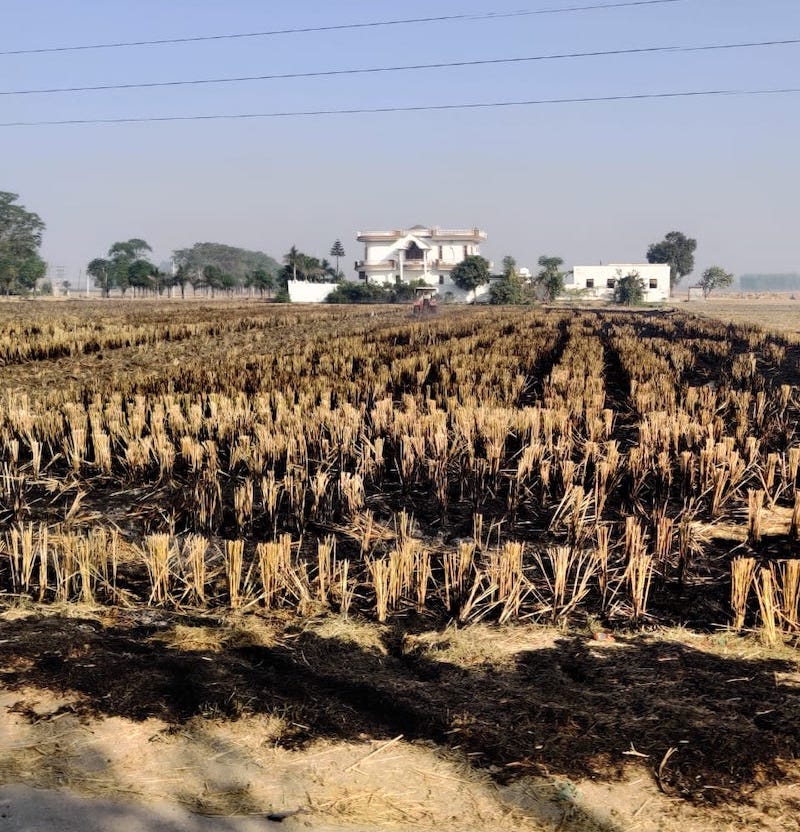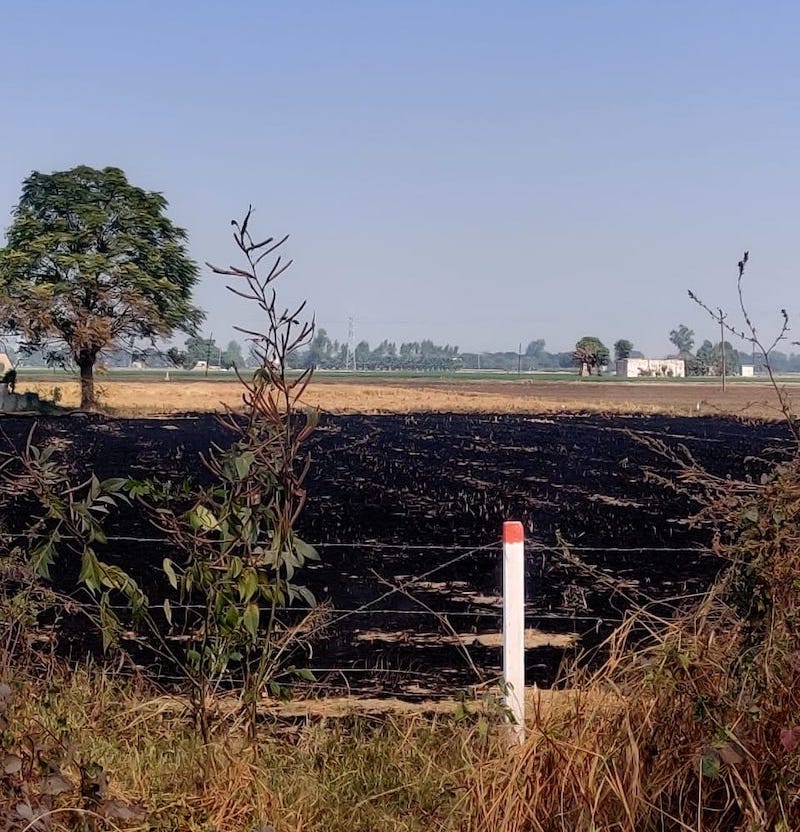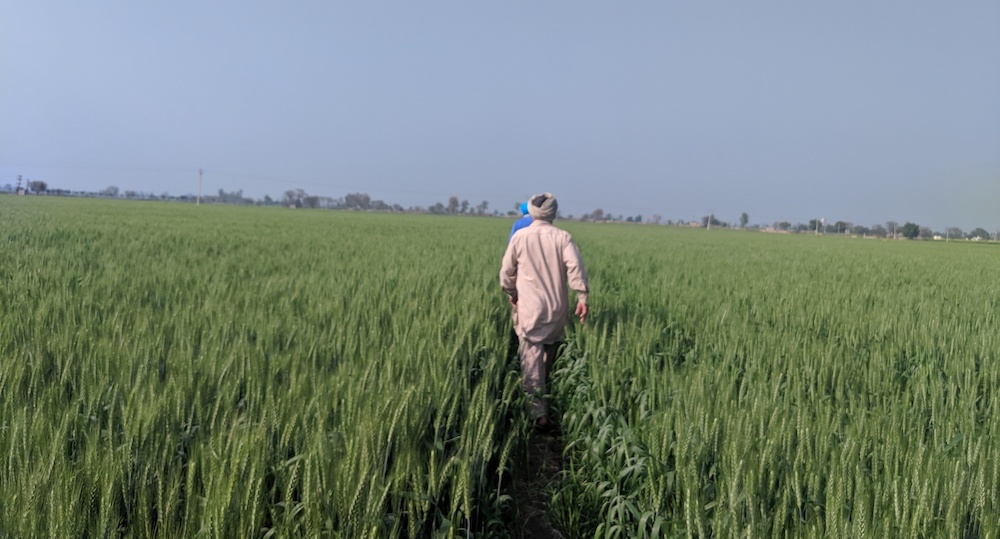India had 21 of the 30 most polluted cities in the world in 2019 (IQAir, 2019 ). Pollution monitors routinely register pollution levels several times above WHO standards. And every fall, for about a month, as thousands of farmers in North India clear their fields of paddy residue by burning, heavy smoke blankets Punjab and spreads to New Delhi hundreds of miles away, affecting millions of people's health.
Crop residue burning is the result of the mechanization of rice paddy harvesting. Mechanized harvesting leaves 8 to 10 inches of paddy stalk which must be cleared before planting the winter (Rabi) crop. Many farmers prefer burning to alternative field clearing methods because it is quick, inexpensive, and minimizes the time between growing seasons, giving them flexibility for other operations. But the air pollution associated with stubble burning has staggering environmental and health externalities. Every acre of paddy yields about 2.5 tons of stubble, which, when burned, sends a ton of organic carbon and numerous pollutants into the atmosphere, which are detrimental to human health. Children are particularly vulnerable, because of their less well-developed lungs and higher respiration rates (WHO 2018). A 2018 report found 66,000 deaths in India were due to agricultural burning in 2015 (GBD MAPS, 2018). The black carbon emitted contributes to climate change.
Crop residue burning is a microcosm of environmental policy challenges faced across the world: how does a government balance the efficacy of environmental protection and human health with the equity concerns of implicitly taxing farmers, who are usually economically vulnerable themselves? My co-authors (Kelsey Jack (UCSB), Seema Jayachandran (Northwestern University), Rohini Pande (Yale University) and I conducted a field experiment last season. The goal of the study was to test the efficacy of conditional cash transfers to paddy farmers in preventing crop burning, as well as test whether lack of trust or liquidity constraints are a barrier to participating in such programs. The amount of the cash transfer program was picked to defray the cost of stubble management (between ₹800 per acre and ₹1600 per acre – the average stubble management costs reported by farmers who did not burn was about ₹2700 per acre). Furthermore, we also varied the percent of the cash transfer that was paid upfront for the lower payment arm. A subset of farmers were offered 25% of the ₹800 per acre upfront, another subset was offered 50% of the ₹800 per acre upfront, and another set of farmers were offered the same amount of money with no upfront payments. While the analysis is still ongoing, we hope this can shed some light on the barriers to preventing the use of alternative strategies in residue management.


The pandemic and lockdowns had brought economic activity to a halt, with pollution levels plummeting in the short-run. Yet the consequent economic distress also makes it difficult to expect farmers to risk shorter growing seasons and pay more to clear their fields. This is consistent with satellite data from NASA, which show that October 2019 saw about 17,700 fires in Punjab – this year, about 26,000 fires occurred in October 2020.

Namrata Kala
February 2021
